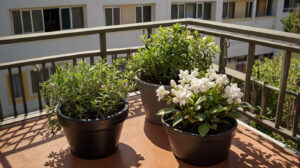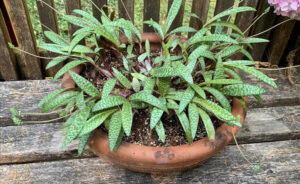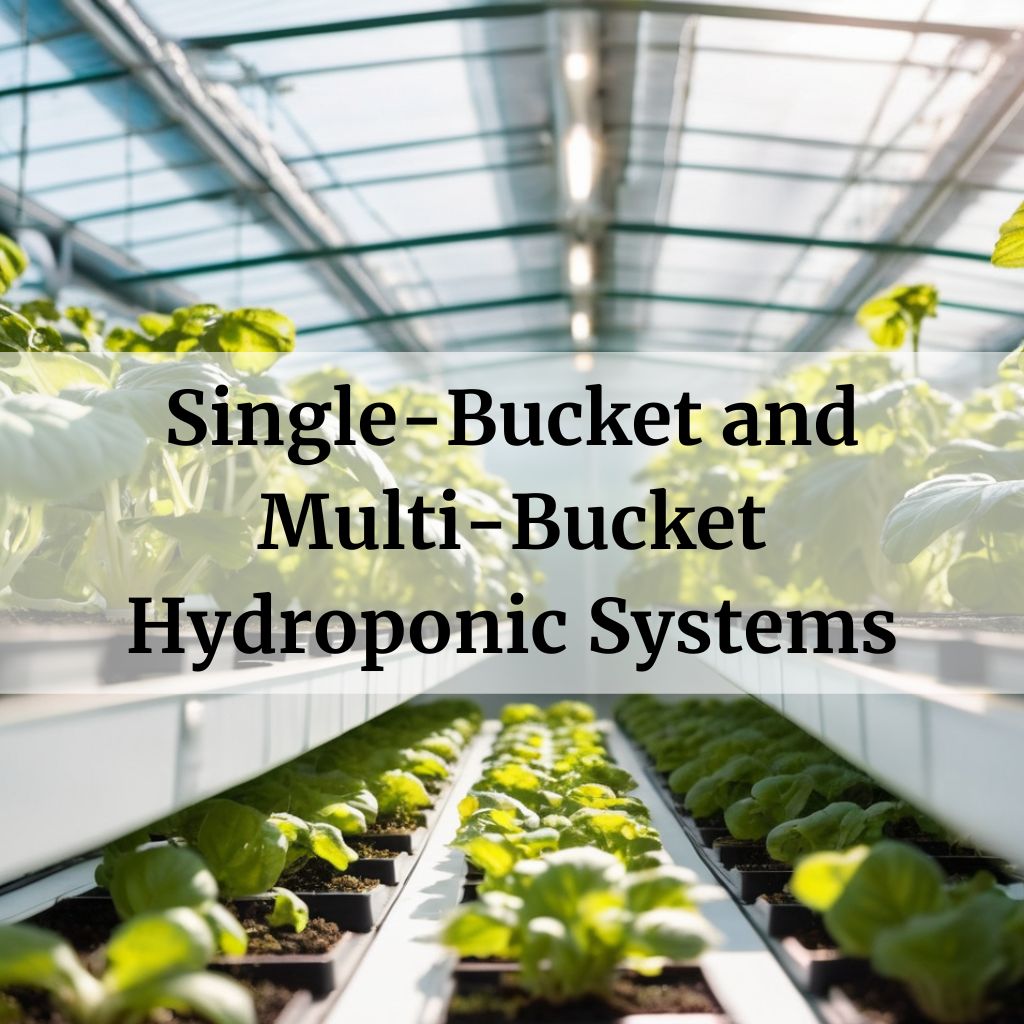
Single-bucket and multi-bucket hydroponic systems are two distinct setups designed for growing plants in containers. In this article, we’ll explore the differences between these two systems, providing insights into their unique characteristics and the advantages they offer for indoor gardening.
In this article
- 1 Single-Bucket Hydroponic System
- 2 Multi-Bucket Hydroponic System
- 3 Pros & cons of a single-bucket hydroponic system
- 4 Pros & cons of multi-bucket hydroponic systems
- 5 Single- and multi-bucket hydroponic system plant growth
- 6 Maintenance requirements for a single-bucket system
- 7 Maintenance requirements for a multi-bucket systems
- 7.1 Common issues that can arise in a multi-bucket hydroponic system:
- 7.2 How often should the nutrient solution be changed in a multi-bucket hydroponic system:
- 7.3 Signs that the nutrient solution needs to be changed in a multi-bucket hydroponic system:
- 7.4 Benefits of a multi-bucket hydroponic system over a single bucket hydroponic system:
- 7.5 How to prevent common issues in a multi-bucket hydroponic system:
- 7.6 Best practices for changing the nutrient solution in a multi-bucket hydroponic system:
- 7.7 Maintaining ph and ec levels in a multi-bucket hydroponic system
- 7.8 The best types of plants to grow in a multi-bucket hydroponic system are:
Single-Bucket Hydroponic System
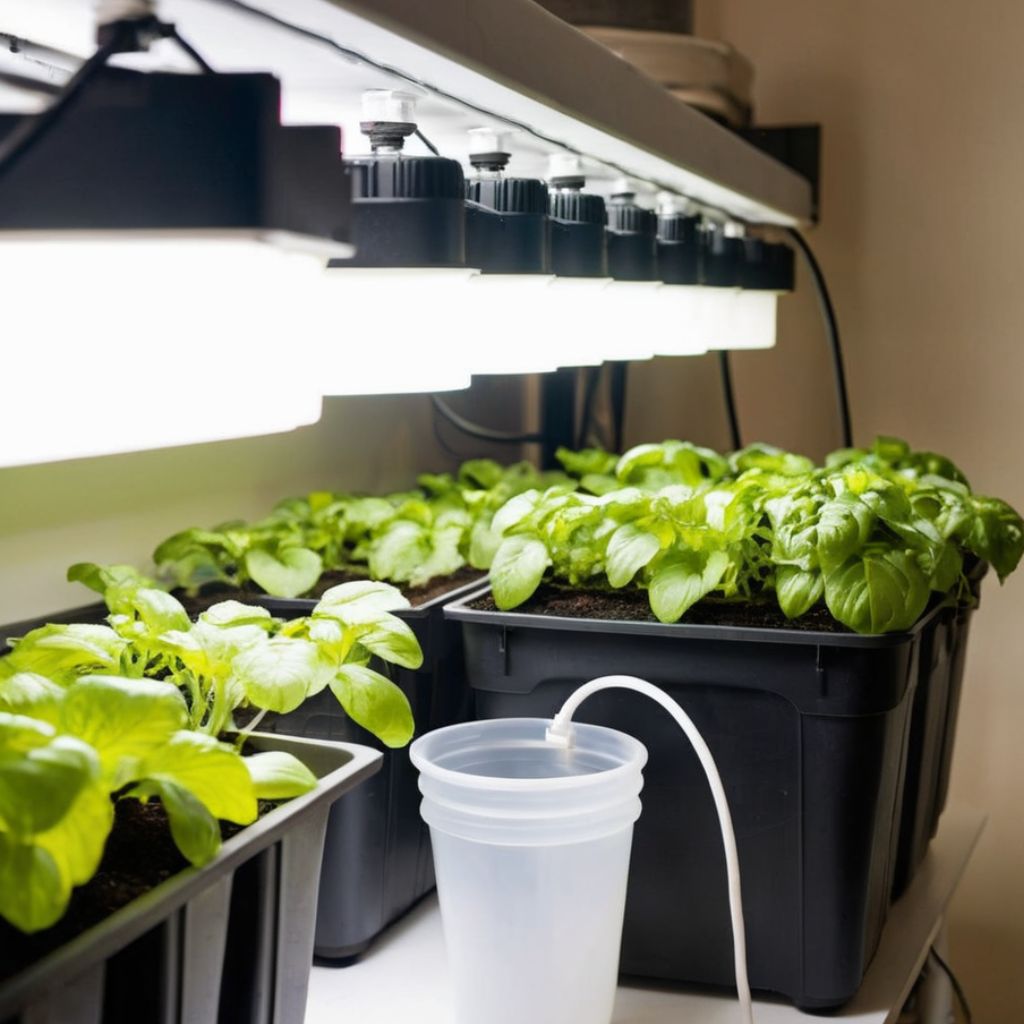
The Single-Bucket Hydroponic System, a gardening method designed for cultivating large plants in a single bucket or similar container. It emphasizes the system’s versatility, as it can support a wide range of plants, including fruiting vegetables, herbs, and leafy greens. This hydroponic setup is known for its cost-effectiveness, utilizing readily available materials like food-grade plastic buckets and uncomplicated nutrient solutions.
Additionally, it’s beginner-friendly, making it an attractive choice for those new to hydroponics. Its ease of setup and maintenance, combined with the ability to tailor care to individual plant requirements, further enhance its appeal to both novices and experienced growers.
In summary, single-bucket systems are:
- Designed for growing big plants in a mesh pot, typically using a single bucket or similar container as the primary growing vessel.
- Suitable for various types of plants, including fruiting vegetables, herbs, and leafy greens.
- Cost-effective, using basic materials such as food-grade plastic buckets and simple nutrient solutions.
- Great for beginners due to its low cost and scalability.
- Easy to set up and maintain, making it a popular choice for first-time hydroponic enthusiasts.
- Allows for individualized care and adjustments to meet the specific needs of each plant.
Multi-Bucket Hydroponic System
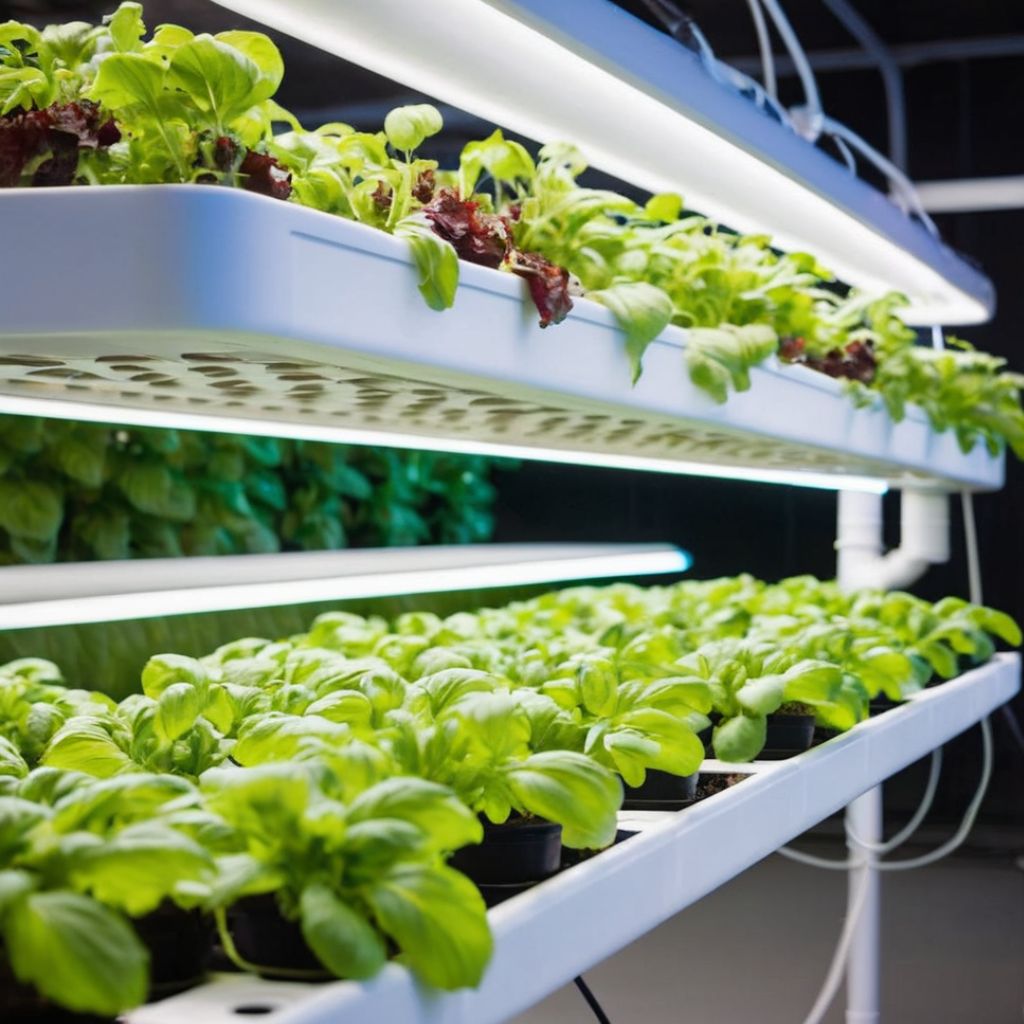
The Multi-Bucket Hydroponic System is a hydroponic setup characterized by the use of multiple buckets or similar containers that are interconnected with a central reservoir. Unlike single-bucket systems, this method demands more space, equipment, and continuous monitoring. It is particularly well-suited for larger-scale or commercial operations, as it can accommodate a greater number of plants in a single system.
One of its key advantages is its scalability, allowing growers to expand the system as needed. However, it also comes with some trade-offs, as it requires a water pump to sustain the plants, which increases energy consumption and makes the pump and timers integral components of the system.
On the positive side, it provides a larger volume of water and nutrients to the plants, potentially leading to faster growth and higher yields. But it’s important to note that the complexity and cost of setting up and maintaining a multi-bucket hydroponic system can be higher compared to a single-bucket system.
In summary, multi-bucket systems:
- Consist of multiple buckets or similar containers connected to a central reservoir.
- Requires more space, equipment, and monitoring than a single-bucket system.
- Can grow a larger number of plants in a single system, making it suitable for commercial or larger-scale operations.
- Offers the advantage of scalability, allowing growers to expand the system as needed.
- Requires a water pump to keep the plants alive, increasing energy consumption and making the pump and timers fundamental components of the system.
- Provides a larger volume of water and nutrients for the plants, potentially leading to faster growth and higher yields.
- More complex and expensive to set up and maintain than a single-bucket system.
Pros & cons of a single-bucket hydroponic system
A single-bucket hydroponic system has several advantages and disadvantages. Here are the pros and cons of using a single bucket hydroponic system:
Pros
- Simplicity: Bucket hydroponic systems are easy to set up and maintain, making them suitable for beginners.
- Low cost: These systems are cost-effective because they use basic materials such as food-grade plastic buckets and simple nutrient solutions.
- Scalability: Bucket systems can be easily scaled up or down, depending on your needs and available space.
- Individualized care: Each bucket is separate, allowing for individualized care and adjustments to meet the specific needs of each plant.
- Pest and disease control: If one bucket gets infected, you can quickly remove it from the area to prevent the spread of pests and diseases.
- Versatility: Bucket systems can be used to grow various types of plants, including fruiting vegetables, herbs, and leafy greens.
Cons
- Limited plant size: Single bucket systems are generally suitable for smaller plants, and growing larger plants may require more frequent nutrient solution changes.
- Water and nutrient management: You need to monitor and maintain the water and nutrient levels in each bucket, which can be time-consuming for larger systems.
- Nutrient solution changes: In some cases, you may need to fully change the nutrient solution several times per crop cycle, which can be inconvenient with a bucket system.
- pH level monitoring: You need to regularly check the pH level of the nutrient solution and adjust it if necessary.
- Power outage dependency: Bucket systems that rely on air pumps or other electrical components may be affected by power outages.
Pros & cons of multi-bucket hydroponic systems
Here are the pros and cons of a multi-bucket hydroponic system:
Pros
- Scalability: Multi-bucket hydroponic systems can be easily scaled up or down, depending on your needs and available space.
- Higher yields: Multi-bucket systems provide a larger volume of water and nutrients for the plants, potentially leading to faster growth and higher yields.
- Suitable for larger plants: Multi-bucket systems can accommodate larger plants, making them a good choice for fruiting vegetables such as tomatoes and cucumbers.
- Pest and disease control: If one bucket gets infected, you can quickly remove it from the area to prevent the spread of pests and diseases.
- Water and nutrient management: Multi-bucket systems require less frequent nutrient solution changes than single-bucket systems.
- Efficient use of space: Multi-bucket systems can grow a larger number of plants in a smaller space than soil-based gardens.
Cons
- Higher cost: Multi-bucket systems can be more expensive to set up and maintain than single-bucket systems due to the need for additional equipment such as water pumps and timers.
- More complex: Multi-bucket systems are more complex than single-bucket systems, requiring more monitoring and maintenance.
- Power outage dependency: Multi-bucket systems that rely on air pumps or other electrical components may be affected by power outages.
- Nutrient solution management: Multi-bucket systems require more careful management of the nutrient solution to ensure that each bucket receives the correct amount of nutrients.
- Limited individualized care: Multi-bucket systems do not allow for individualized care of each plant, as all plants in the system receive the same nutrient solution.
Single- and multi-bucket hydroponic system plant growth
Multi-bucket hydroponic systems can affect plant growth in several ways compared to single-bucket systems. Here are some of the differences:
Single-bucket hydroponic system plant growth
- Individualized care: Each bucket is separate, allowing for individualized care and adjustments to meet the specific needs of each plant.
- Low cost: These systems are cost-effective because they use basic materials such as food-grade plastic buckets and simple nutrient solutions.
- Suitable for smaller plants: Single-bucket systems are generally suitable for smaller plants, and growing larger plants may require more frequent nutrient solution changes.
- Simplicity: Bucket hydroponic systems are easy to set up and maintain, making them suitable for beginners.
- Water and nutrient management: Single-bucket systems require more frequent nutrient solution changes than multi-bucket systems.
Multi-bucket hydroponic system plant growth
- Higher yields: Multi-bucket systems provide a larger volume of water and nutrients for the plants, potentially leading to faster growth and higher yields.
- Suitable for larger plants: Multi-bucket systems can accommodate larger plants, making them a good choice for fruiting vegetables such as tomatoes and cucumbers.
- Limited individualized care: Multi-bucket systems do not allow for individualized care of each plant, as all plants in the system receive the same nutrient solution.
- More complex: Multi-bucket systems are more complex than single-bucket systems, requiring more monitoring and maintenance.
- Higher cost: Multi-bucket systems can be more expensive to set up and maintain than single-bucket systems due to the need for additional equipment such as water pumps and timers.
Overall, multi-bucket hydroponic systems can provide higher yields and accommodate larger plants, but they are more complex and expensive to set up and maintain. Single-bucket hydroponic systems are simpler and more cost-effective, but they are generally suitable for smaller plants and require more frequent nutrient solution changes.
Maintenance requirements for a single-bucket system
Maintaining a single bucket hydroponic system is relatively simple and requires minimal maintenance. Here are some of the maintenance requirements for a single bucket hydroponic system:
- Check the water level: Check the water level in the bucket daily and add more water as needed to ensure that the roots are submerged in the nutrient solution.
- Check the pH level: Check the pH level of the nutrient solution regularly and adjust it if necessary to ensure that it is within the appropriate range for the plants you are growing.
- Check the nutrient level: Check the nutrient level of the solution regularly and add more nutrients as needed to maintain the appropriate level.
- Clean the bucket: Clean the bucket and the growing medium regularly to prevent the buildup of algae and other contaminants.
- Prune the plants: Prune the plants as needed to remove dead or damaged leaves and promote healthy growth.
- Monitor the plants: Monitor the plants regularly for signs of pests or disease and take appropriate action if necessary.
- Replace the nutrient solution: Replace the nutrient solution every two to three weeks or as needed to maintain the appropriate nutrient level.
Overall, maintaining a single bucket hydroponic system is relatively easy and requires minimal maintenance. By checking the water level, pH level, and nutrient level regularly, cleaning the bucket and growing medium, and monitoring the plants for signs of pests or disease, you can keep your plants healthy and thriving.
Maintenance requirements for a multi-bucket systems
Maintaining a multi-bucket hydroponic system requires more effort than a single-bucket system. Here are some of the maintenance requirements for a multi-bucket hydroponic system:
- Check the water level: Check the water level in each bucket daily and add more water as needed to ensure that the roots are submerged in the nutrient solution.
- Check the pH level: Check the pH level of the nutrient solution in each bucket regularly and adjust it if necessary to ensure that it is within the appropriate range for the plants you are growing.
- Check the nutrient level: Check the nutrient level of the solution in each bucket regularly and add more nutrients as needed to maintain the appropriate level.
- Clean the buckets: Clean the buckets and the growing medium regularly to prevent the buildup of algae and other contaminants.
- Prune the plants: Prune the plants as needed to remove dead or damaged leaves and promote healthy growth.
- Monitor the plants: Monitor the plants regularly for signs of pests or disease and take appropriate action if necessary.
- Replace the nutrient solution: Replace the nutrient solution in each bucket every two to three weeks or as needed to maintain the appropriate nutrient level.
- Check the water pump: Check the water pump regularly to ensure that it is functioning properly and replace it if necessary.
- Check the water filters: Check the water filters regularly and replace them as needed to maintain the appropriate level of filtration.
Overall, maintaining a multi-bucket hydroponic system requires more effort than a single-bucket system. By checking the water level, pH level, and nutrient level regularly, cleaning the buckets and growing medium, and monitoring the plants for signs of pests or disease, you can keep your plants healthy and thriving. Additionally, checking the water pump and water filters regularly can help ensure that the system is functioning properly.
Common issues that can arise in a multi-bucket hydroponic system:
- pH imbalance: The pH level of the nutrient solution can become too high or too low, affecting nutrient uptake and plant growth.
- Nutrient deficiency or excess: Imbalances in the nutrient solution can lead to stunted growth, yellowing leaves, or nutrient burn.
- Root rot: Overwatering or poor drainage can cause root rot, which is characterized by slimy, brown roots and can be fatal to plants.
- Clogging: The system’s tubing or drip emitters can become clogged with debris or mineral buildup, affecting water and nutrient distribution.
- Algae growth: Excessive light exposure or high nutrient levels can promote algae growth, which can compete with plants for nutrients and oxygen.
How often should the nutrient solution be changed in a multi-bucket hydroponic system:
The frequency of nutrient solution changes depends on various factors, such as the size of the system, the type of plants grown, and the nutrient solution’s stability. In general, the nutrient solution should be changed every 1-2 weeks. However, it is essential to monitor the solution’s pH and nutrient levels regularly to ensure optimal plant growth.
Signs that the nutrient solution needs to be changed in a multi-bucket hydroponic system:
- pH imbalance: If the pH level of the nutrient solution is consistently too high or too low, it may indicate the need for a solution change.
- Nutrient deficiency or excess: Yellowing leaves, stunted growth, or nutrient burn can be signs of nutrient imbalances that require a solution change.
- Foul odor: A strong, unpleasant smell coming from the nutrient solution may indicate the presence of harmful bacteria or fungi, necessitating a solution chang.
- Excessive algae growth: If the nutrient solution becomes green and cloudy due to algae growth, it is a sign that the solution needs to be changed.
Benefits of a multi-bucket hydroponic system over a single bucket hydroponic system:
- Higher yields: Multi-bucket systems provide a larger volume of water and nutrients for the plants, potentially leading to faster growth and higher yields.
- Suitable for larger plants: Multi-bucket systems can accommodate larger plants, making them a good choice for fruiting vegetables such as tomatoes and cucumbers.
- Scalability: Multi-bucket systems can be easily scaled up or down, depending on your needs and available space.
- Efficient use of space: Multi-bucket systems can grow a larger number of plants in a smaller space than soil-based gardens.
How to prevent common issues in a multi-bucket hydroponic system:
- Maintain proper pH and nutrient levels: Regularly check and adjust the pH and nutrient levels in each bucket to prevent imbalances that can affect plant growth.
- Clean the buckets and growing medium: Regularly clean the buckets and growing medium to prevent the buildup of algae and other contaminants that can affect plant health.
- Monitor the plants: Regularly monitor the plants for signs of pests or disease and take appropriate action if necessary.
- Check the water pump and filters: Regularly check the water pump and filters to ensure that they are functioning properly and replace them if necessary.
Best practices for changing the nutrient solution in a multi-bucket hydroponic system:
- Check the pH and nutrient levels: Before changing the nutrient solution, check the pH and nutrient levels in each bucket to ensure that they are within the appropriate range for the plants you are growing.
- Drain the buckets: Drain the nutrient solution from each bucket and discard it.
- Clean the buckets: Clean the buckets and growing medium to remove any debris or contaminants.
- Prepare the new nutrient solution: Mix a new batch of nutrient solution according to the manufacturer’s instructions and adjust the pH and nutrient levels as needed.
- Refill the buckets: Refill each bucket with the new nutrient solution and adjust the water level as needed.
By following these best practices, you can help ensure that your multi-bucket hydroponic system is functioning properly and your plants are healthy and thriving.
Maintaining ph and ec levels in a multi-bucket hydroponic system
To maintain the pH and EC levels in a multi-bucket hydroponic system, follow these steps:
- Regularly check the nutrient solution levels, pH, and EC to ensure they are within the appropriate range. The pH level should be between 5.5 and 6.5, while the EC level should be between 1.2 and 2.0 mS/cm.
- Adjust the nutrient solution and water as necessary to maintain the proper levels. If the pH is too high, add a pH down solution. If the pH is too low, add a pH up solution. If the EC is too high, dilute the nutrient solution with water. If the EC is too low, add more nutrients to the solution.
- Monitor the water temperature and try to keep it between 65 and 75 degrees Fahrenheit. High water temperatures can lead to low oxygen levels, which can be harmful to the plants.
- Provide adequate aeration to the nutrient solution. This can be done by using an air pump and air stones or by using a recirculating system that creates turbulence in the water.
- Clean the buckets and growing medium regularly to prevent the buildup of algae, bacteria, and other pathogens that can affect the pH and EC levels.
- Prune and maintain your plants as they grow. This will help ensure that they are receiving the proper amount of nutrients and water.
The best types of plants to grow in a multi-bucket hydroponic system are:
- Leafy greens such as lettuce, spinach, and kale. These plants have shallow root systems and can be grown in smaller buckets.
- Herbs such as basil, parsley, and cilantro. These plants are also small and can be grown in smaller buckets.
- Strawberries. These plants are small and can be grown in hanging baskets or towers.
- Tomatoes. These plants are larger and will require more support, such as trellises or stakes.
- Peppers. These plants are also larger and will require more support.
- Cucumbers. These plants are vining and will require a trellis or other support structure.
- Beans. These plants are vining and will require a trellis or other support structure.
- Melons. These plants are larger and will require a trellis or other support structure.
- Squash. These plants are larger and will require a trellis or other support structure.
- Pumpkins. These plants are larger and will require a trellis or other support structure.
In conclusion, the choice between a Single-Bucket Hydroponic System and a Multi-Bucket Hydroponic System ultimately depends on your goals and resources.
The single-bucket system is an excellent starting point for beginners due to its simplicity, cost-effectiveness, and ease of maintenance. It offers a great platform for learning the basics of hydroponics and is suitable for smaller-scale, home-based gardening.
On the other hand, the multi-bucket system caters to those with larger ambitions, be it for commercial ventures or substantial home production. It may demand more space, equipment, and financial investment, but it rewards with the potential for higher yields and scalability.
As with any choice in hydroponics, it’s crucial to weigh the specific needs and goals of your growing venture against the benefits and complexities of each system, ensuring that your chosen hydroponic setup aligns with your vision for successful and sustainable plant cultivation.
Citations:
- Required Daily Hydroponic System Maintenance
- Hydroponic System Maintenance and Monitoring: Quick Guide
- Article 2-4 The Bucket System
- Small-scale hydroponics
- Required Daily Hydroponic System Maintenance – Garden & Greenhouse (gardenandgreenhouse.net)
- How to choose the best hydroponic bucket system for you




